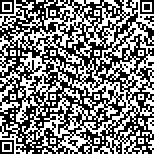| 引用本文: |
任怡君,陈玺倩,卢伟.黄连素对脑出血大鼠脑组织免疫炎症反应的影响[J].湖南中医药大学学报,2022,42(8):1261-1265[点击复制] |
|
| |
|
|
| 本文已被:浏览 2528次 下载 1194次 |
| 黄连素对脑出血大鼠脑组织免疫炎症反应的影响 |
| 任怡君,陈玺倩,卢伟 |
| (中南大学湘雅二医院神经病学科, 湖南 长沙 400012) |
| 摘要: |
| 目的 探究黄连素对脑出血(intracerebral hemorrhage,ICH)大鼠脑组织中免疫炎症反应的影响。方法 48只SD大鼠随机分为假手术(Sham)组、模型(ICH)组、黄连素(BBR)组,每组分为24 h及72 h两个时间点,每个亚组各8只。采用Ⅳ型胶原酶法构建ICH大鼠模型,BBR组给予黄连素200 mg/(kg·d)灌胃。对各组大鼠进行改良Garcia评分,Western blot法检测基质金属蛋白酶9(matrix metalloproteinase-9,MMP-9)、肿瘤坏死因子α(tumor necrosis factor α,TNF-α)、白细胞介素-6(interleukin-6,IL-6)蛋白表达水平,免疫荧光染色法检测小胶质细胞活化和极化的情况。结果 与相同时间点的Sham组相比,ICH组改良Garcia评分明显升高(P<0.05),脑组织中出现明显血肿,脑组织中MMP-9、TNF-α和IL-6表达明显升高(P<0.05),脑组织中小胶质细胞活化。与各时间点ICH组相比,BBR组改良Garcia评分呈下降趋势,但差异无统计学意义(P>0.05)。24 h时,与ICH组相比,BBR组脑组织中MMP-9表达明显降低(P<0.05),TNF-α和IL-6表达降低,但差异无统计学意义(P>0.05),M2型小胶质细胞比例升高;72 h时,与ICH组相比,BBR组脑组织中MMP-9和TNF-α表达明显降低(P<0.05),IL-6表达降低,但差异无统计学意义(P>0.05),M2型小胶质细胞比例升高。结论 黄连素可通过影响中枢神经系统免疫反应,下调炎症因子表达、促进小胶质细胞极化为M2抗炎亚型,发挥神经保护作用。 |
| 关键词: 脑出血 免疫炎症反应 小胶质细胞 黄连素 神经保护 炎症因子 大鼠 |
| DOI:10.3969/j.issn.1674-070X.2022.08.006 |
| 投稿时间:2021-11-02 |
| 基金项目:湖南省自然科学基金项目(S2020JJMSXM3101)。 |
|
| Effect of berberine on immune inflammatory response after intracerebral hemorrhage in SD rats |
| REN Yijun,CHEN Xiqian,LU Wei |
| (Department of Neurology, The Second Xiangya Hospital, Central South University, Changsha, Hunan 400012, China) |
| Abstract: |
| Objective To investigate the influence of berberine on immune and inflammation responses in brain tissues of rats with intracerebral hemorrhage (ICH). Methods A total of 48 SD rats were randomly divided into sham-operated group (Sham group), ICH model group (ICH group), and berberine (BBR) group. Each group was divided into 24 h and 72 h time points. The IV collagenase was used to construct experimental ICH models in rats. The BBR group was given berberine 200 mg/(kg·d) by gavage, once a day. Modified Garcia score was performed on rats in each group. Western blot method was used to detect the protein expression levels of matrix metalloproteinase-9 (MMP-9), tumor necrosis factor α (TNF-α) and interleukin-6 (IL-6). Fluorescence immunostaining was used to detect the activation and polarization of microglia. Results Compared with the Sham group at each time point, the modified Garcia scores were significantly increased (P<0.05) in the ICH group. Obvious hematoma appeared in the brain tissue, and the expression levels of MMP-9, IL-6 and TNF-α in the brain tissue were increased significantly (P<0.05). Microglia were activated after ICH. Compared with the ICH model group at each time point, the modified Garcia scores in the BBR group showed a downward trend, which was not of statistically significance (P>0.05). At 24 h, compared with the ICH group, the expression of MMP-9 in the BBR group was significantly decreased (P<0.05), and the expression levels of TNF-α and IL-6 were decreased, which was not of statistically significance (P>0.05). The proportion of M2-type microglia increased. At 72 h, compared with the ICH group, the expression levels of MMP-9 and TNF-α in the BBR group were significantly decreased (P<0.05), and the expression of IL-6 decreased, which was not of statistically significance (P>0.05). The proportion of M2-type microglia increased. Conclusion Berberine exhibits neuroprotective effects by influencing the immune response of the central nervous system through down-regulating the expression of inflammatory factors and promoting the polarization of microglia into the M2 anti-inflammatory subtype. |
| Key words: intracerebral hemorrhage immune inflammatory response microglia berberine neuroprotection inflammatory cytokine rat |
|

二维码(扫一下试试看!) |
|
|
|
|




